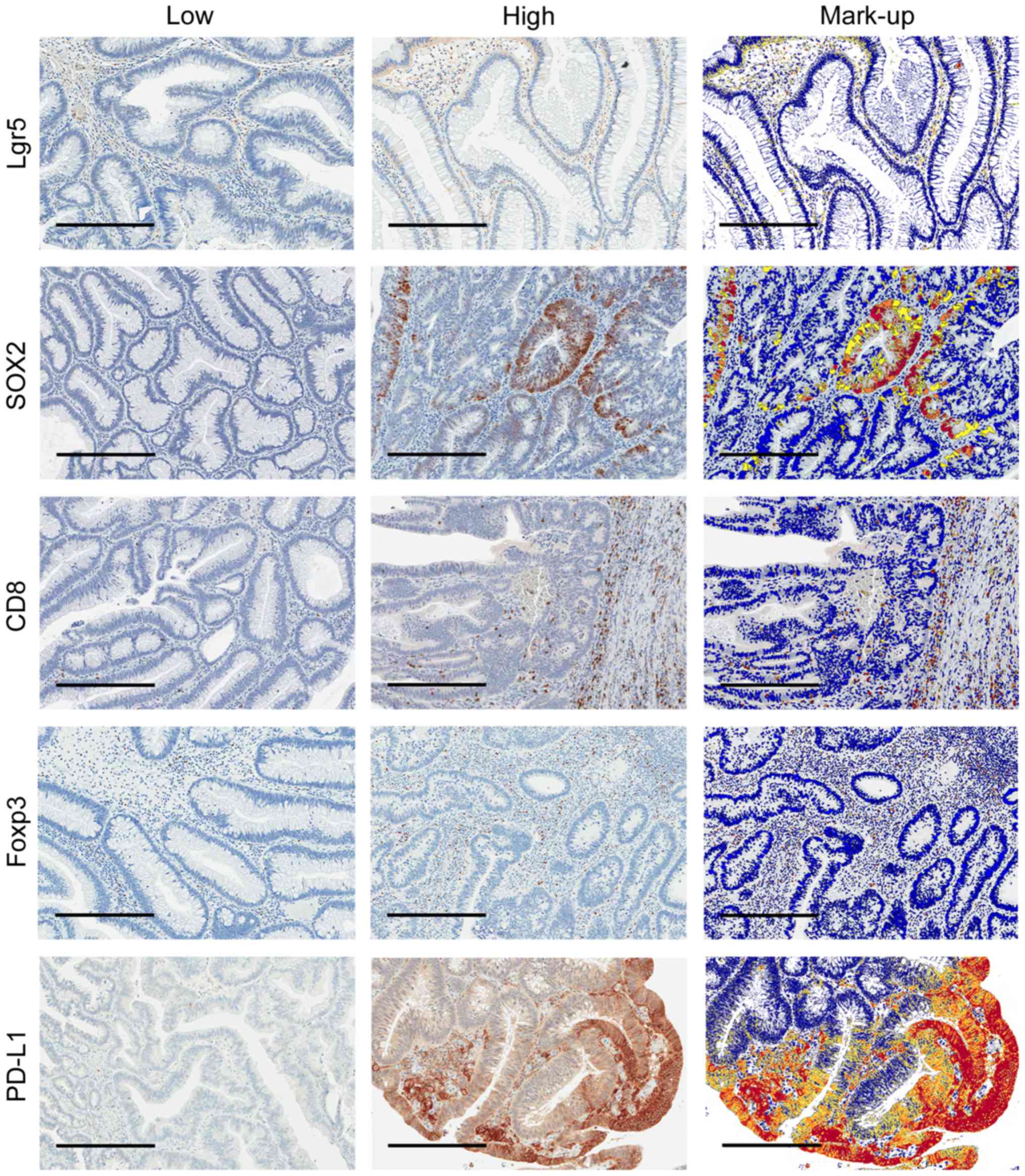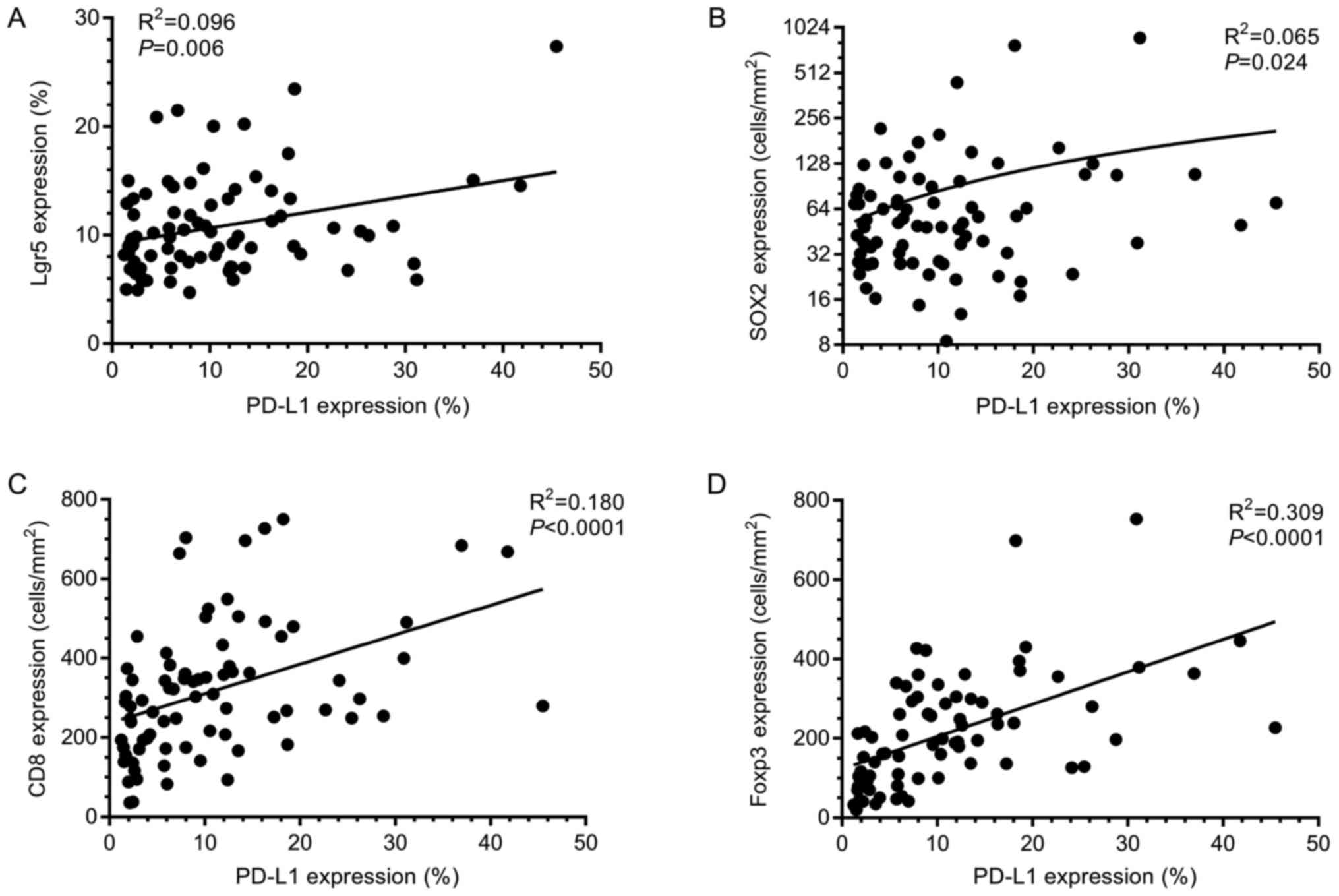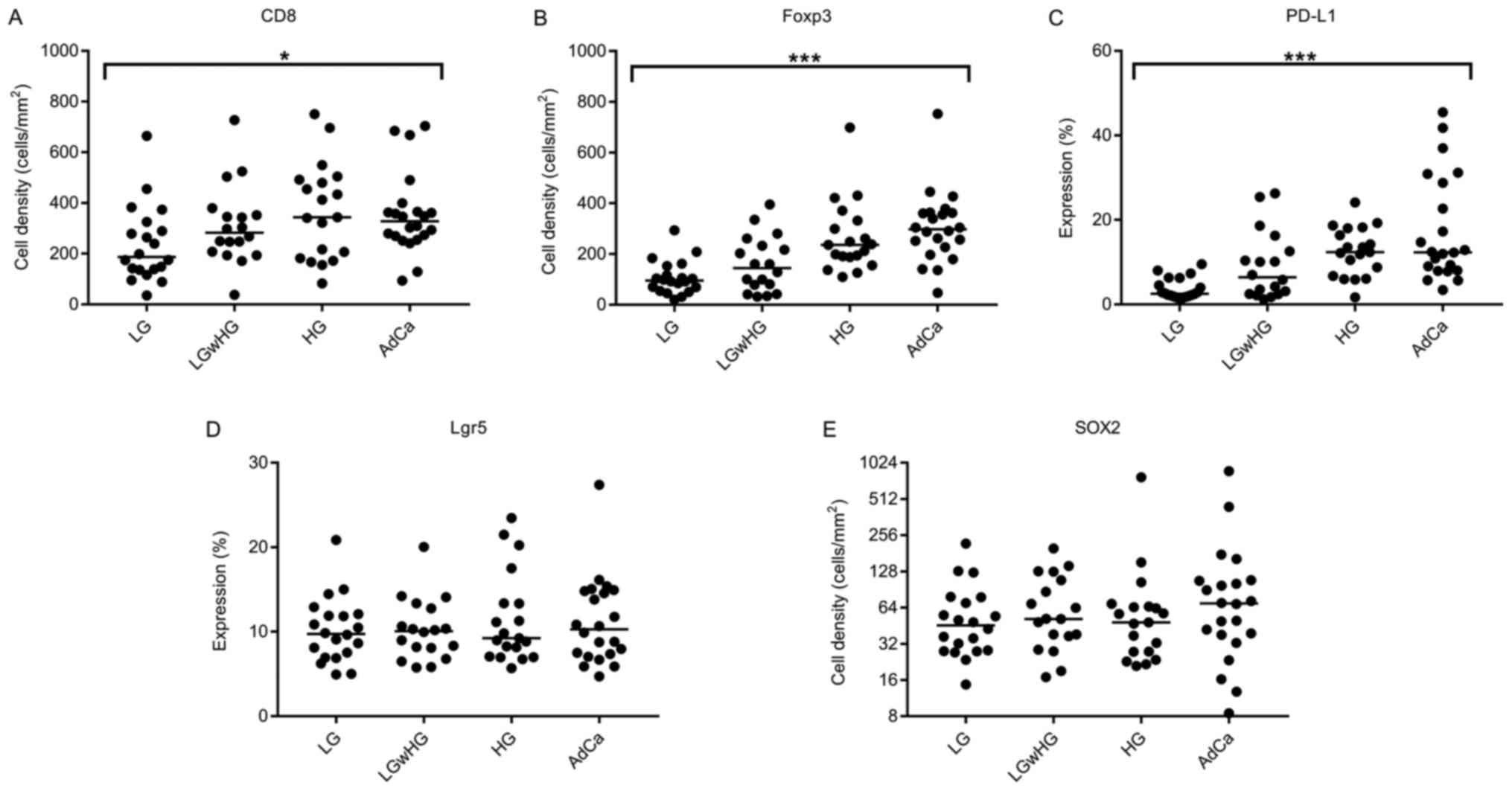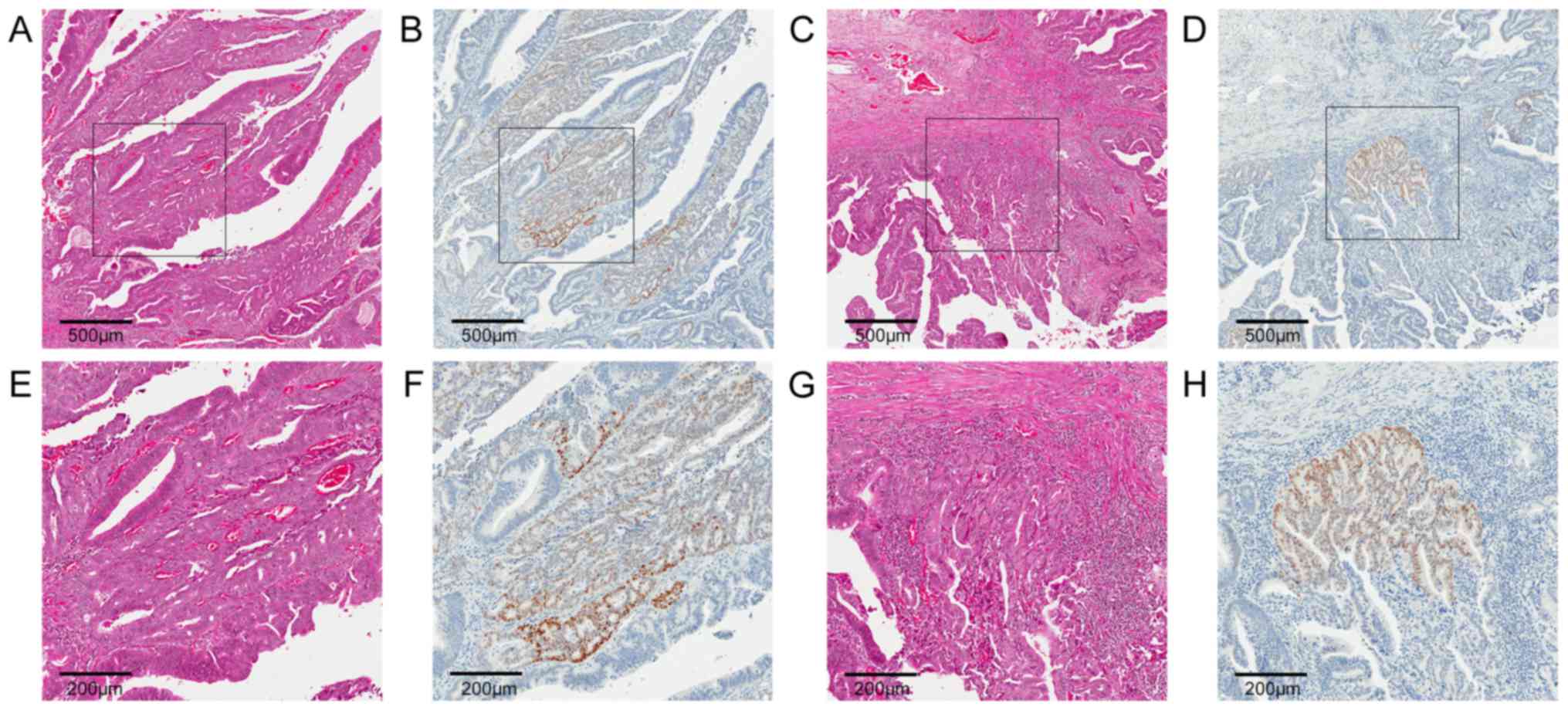|
1
|
American Cancer Society, . Global cancer
facts & figures. 2nd. American Cancer Society; Atlanta, GA:
2012
|
|
2
|
Vogelstein B, Fearon ER, Hamilton SR, Kern
SE, Preisinger AC, Leppert M, Nakamura Y, White R, Smits AM and Bos
JL: Genetic alterations during colorectal-tumor development. N Engl
J Med. 319:525–532. 1988. View Article : Google Scholar : PubMed/NCBI
|
|
3
|
Fearon ER and Vogelstein B: A genetic
model for colorectal tumorigenesis. Cell. 61:759–767. 1990.
View Article : Google Scholar : PubMed/NCBI
|
|
4
|
Fischer JM, Schepers AG, Clevers H,
Shibata D and Liskay RM: Occult progression by Apc-deficient
intestinal crypts as a target for chemoprevention. Carcinogenesis.
35:237–246. 2014. View Article : Google Scholar : PubMed/NCBI
|
|
5
|
Barker N, Ridgway RA, van Es JH, van de
Wetering M, Begthel H, van den Born M, Danenberg E, Clarke AR,
Sansom OJ and Clevers H: Crypt stem cells as the cells-of-origin of
intestinal cancer. Nature. 457:608–611. 2009. View Article : Google Scholar : PubMed/NCBI
|
|
6
|
Barker N, van Es JH, Kuipers J, Kujala P,
van den Born M, Cozijnsen M, Haegebarth A, Korving J, Begthel H,
Peters PJ and Clevers H: Identification of stem cells in small
intestine and colon by marker gene Lgr5. Nature. 449:1003–1007.
2007. View Article : Google Scholar : PubMed/NCBI
|
|
7
|
Baker AM, Graham TA, Elia G, Wright NA and
Rodriguez-Justo M: Characterization of LGR5 stem cells in
colorectal adenomas and carcinomas. Sci Rep. 5:86542015. View Article : Google Scholar : PubMed/NCBI
|
|
8
|
Jang BG, Kim HS, Kim KJ, Rhee YY, Kim WH
and Kang GH: Distribution of intestinal stem cell markers in
colorectal precancerous lesions. Histopathology. 68:567–577. 2016.
View Article : Google Scholar : PubMed/NCBI
|
|
9
|
Takeda K, Kinoshita I, Shimizu Y, Matsuno
Y, Shichinohe T and Dosaka-Akita H: Expression of LGR5, an
intestinal stem cell marker, during each stage of colorectal
tumorigenesis. Anticancer Res. 31:263–270. 2011.PubMed/NCBI
|
|
10
|
Becker L, Huang Q and Mashimo H:
Immunostaining of Lgr5, an intestinal stem cell marker, in normal
and premalignant human gastrointestinal tissue.
ScientificWorldJournal. 8:1168–1176. 2008. View Article : Google Scholar : PubMed/NCBI
|
|
11
|
Choi JW, Kim JK, Choi M, Kim YR and Yun
SH: In vivo imaging of Lgr5-positive cell populations using
confocal laser endomicroscopy during early colon tumorigenesis.
Endoscopy. 46:1110–1115. 2014. View Article : Google Scholar : PubMed/NCBI
|
|
12
|
Davis H, Irshad S, Bansal M, Rafferty H,
Boitsova T, Bardella C, Jaeger E, Lewis A, Freeman-Mills L, Giner
FC, et al: Aberrant epithelial GREM1 expression initiates colonic
tumorigenesis from cells outside the stem cell niche. Nat Med.
21:62–70. 2015. View
Article : Google Scholar : PubMed/NCBI
|
|
13
|
Takahashi K and Yamanaka S: Induction of
pluripotent stem cells from mouse embryonic and adult fibroblast
cultures by defined factors. Cell. 126:663–676. 2006. View Article : Google Scholar : PubMed/NCBI
|
|
14
|
Neumann J, Bahr F, Horst D, Kriegl L,
Engel J, Luque RM, Gerhard M, Kirchner T and Jung A: SOX2
expression correlates with lymph-node metastases and distant spread
in right-sided colon cancer. Bmc Cancer. 11:5182011. View Article : Google Scholar : PubMed/NCBI
|
|
15
|
Lundberg IV, Burström Löfgren A, Edin S,
Eklöf V, Öberg Å, Stenling R, Palmqvist R and Wikberg ML: SOX2
expression is regulated by BRAF and contributes to poor patient
prognosis in colorectal cancer. PLoS One. 9:e1019572014. View Article : Google Scholar : PubMed/NCBI
|
|
16
|
Lundberg IV, Edin S, Eklöf V, Öberg Å,
Palmqvist R and Wikberg ML: SOX2 expression is associated with a
cancer stem cell state and down-regulation of CDX2 in colorectal
cancer. BMC Cancer. 16:4712016. View Article : Google Scholar : PubMed/NCBI
|
|
17
|
Ong CW, Chong PY, McArt DG, Chan JY, Tan
HT, Kumar AP, Chung MC, Clément MV, Soong R, Van Schaeybroeck S, et
al: The prognostic value of the stem-like group in colorectal
cancer using a panel of immunohistochemistry markers. Oncotarget.
6:12763–12773. 2015. View Article : Google Scholar : PubMed/NCBI
|
|
18
|
Mazibrada J, Longo L, Vatrano S, Cappia S,
Giorcelli J, Pentenero M, Gandolfo S, Volante M, dell'Oste V, Lo
Cigno I, et al: Differential expression of HER2, STAT3, SOX2, IFI16
and cell cycle markers during HPV-related head and neck
carcinogenesis. New Microbiol. 37:129–143. 2014.PubMed/NCBI
|
|
19
|
Hellner K, Miranda F, Chedom Fotso D,
Herrero-Gonzalez S, Hayden DM, Tearle R, Artibani M,
KaramiNejadRanjbar M, Williams R, Gaitskell K, et al: Premalignant
SOX2 overexpression in the fallopian tubes of ovarian cancer
patients: Discovery and validation studies. EBioMedicine.
10:137–149. 2016. View Article : Google Scholar : PubMed/NCBI
|
|
20
|
Yuan P, Kadara H, Behrens C, Tang X, Woods
D, Solis LM, Huang J, Spinola M, Dong W, Yin G, et al: Sex
determining region Y-Box 2 (SOX2) is a potential cell-lineage gene
highly expressed in the pathogenesis of squamous cell carcinomas of
the lung. PLoS One. 5:e91122010. View Article : Google Scholar : PubMed/NCBI
|
|
21
|
Kreso A and Dick JE: Evolution of the
cancer stem cell model. Cell Stem Cell. 14:275–291. 2014.
View Article : Google Scholar : PubMed/NCBI
|
|
22
|
Bruttel VS and Wischhusen J: Cancer stem
cell immunology: Key to understanding tumorigenesis and tumor
immune escape? Front Immunol. 5:3602014. View Article : Google Scholar : PubMed/NCBI
|
|
23
|
Dunn GP, Bruce AT, Ikeda H, Old LJ and
Schreiber RD: Cancer immunoediting: From immunosurveillance to
tumor escape. Nat Immunol. 3:991–998. 2002. View Article : Google Scholar : PubMed/NCBI
|
|
24
|
Schreiber RD, Old LJ and Smyth MJ: Cancer
immunoediting: Integrating immunity's roles in cancer suppression
and promotion. Science. 331:1565–1570. 2011. View Article : Google Scholar : PubMed/NCBI
|
|
25
|
Pagès F, Berger A, Camus M, Sanchez-Cabo
F, Costes A, Molidor R, Mlecnik B, Kirilovsky A, Nilsson M, Damotte
D, et al: Effector memory T cells, early metastasis, and survival
in colorectal cancer. New Engl J Med. 353:2654–2666. 2005.
View Article : Google Scholar : PubMed/NCBI
|
|
26
|
Galon J, Costes A, Sanchez-Cabo F,
Kirilovsky A, Mlecnik B, Lagorce-Pagès C, Tosolini M, Camus M,
Berger A, Wind P, et al: Type, density, and location of immune
cells within human colorectal tumors predict clinical outcome.
Science. 313:1960–1964. 2006. View Article : Google Scholar : PubMed/NCBI
|
|
27
|
Maglietta A, Maglietta R, Staiano T,
Bertoni R, Ancona N, Marra G and Resta L: The immune landscapes of
polypoid and nonpolypoid precancerous colorectal lesions. PLoS One.
11:e01593732016. View Article : Google Scholar : PubMed/NCBI
|
|
28
|
Mariani F, Sena P, Pedroni M, Benatti P,
Manni P, Di Gregorio C, Manenti A, Palumbo C, de Leon MP and
Roncucci L: Th inducing POZ-Kruppel Factor (ThPOK) is a key
regulator of the immune response since the early steps of
colorectal carcinogenesis. PLoS One. 8:e544882013. View Article : Google Scholar : PubMed/NCBI
|
|
29
|
McLean MH, Murray GI, Stewart KN, Norrie
G, Mayer C, Hold GL, Thomson J, Fyfe N, Hope M, Mowat NA, et al:
The inflammatory microenvironment in colorectal neoplasia. PLoS
One. 6:e153662011. View Article : Google Scholar : PubMed/NCBI
|
|
30
|
Dong H, Zhu G, Tamada K and Chen L: B7-H1,
a third member of the B7 family, co-stimulates T-cell proliferation
and interleukin-10 secretion. Nat Med. 5:1365–1369. 1999.
View Article : Google Scholar : PubMed/NCBI
|
|
31
|
Le DT, Uram JN, Wang H, Bartlett BR,
Kemberling H, Eyring AD, Skora AD, Luber BS, Azad NS, Laheru D, et
al: PD-1 blockade in tumors with mismatch-repair deficiency. New
Engl J Med. 372:2509–2520. 2015. View Article : Google Scholar : PubMed/NCBI
|
|
32
|
Page DB, Postow MA, Callahan MK, Allison
JP and Wolchok JD: Immune modulation in cancer with antibodies.
Annu Rev Med. 65:185–202. 2014. View Article : Google Scholar : PubMed/NCBI
|
|
33
|
Yagyuu T, Hatakeyama K, Imada M, Kurihara
M, Matsusue Y, Yamamoto K, Obayashi C and Kirita T: Programmed
death ligand 1 (PD-L1) expression and tumor microenvironment:
Implications for patients with oral precancerous lesions. Oral
Oncol. 68:36–43. 2017. View Article : Google Scholar : PubMed/NCBI
|
|
34
|
Hatam LJ, DeVoti JA, Rosenthal DW, Lam F,
Abramson AL, Steinberg BM and Bonagura VR: Immune suppression in
premalignant respiratory papillomas: enriched functional CD4+Foxp3+
regulatory T cells and PD-1/PD-L1/L2 expression. Clin Cancer Res.
18:1925–1935. 2012. View Article : Google Scholar : PubMed/NCBI
|
|
35
|
Miller TJ, McCoy MJ, Hemmings C, Bulsara
MK, Iacopetta B and Platell CF: Objective analysis of cancer stem
cell marker expression using immunohistochemistry. Pathology.
49:24–29. 2017. View Article : Google Scholar : PubMed/NCBI
|
|
36
|
McCoy MJ, Hemmings C, Miller TJ, Austin
SJ, Bulsara MK, Zeps N, Nowak AK, Lake RA and Platell CF: Low
stromal Foxp3+ regulatory T-cell density is associated with
complete response to neoadjuvant chemoradiotherapy in rectal
cancer. Br J Cancer. 113:1677–1686. 2015. View Article : Google Scholar : PubMed/NCBI
|
|
37
|
Lee SJ, Jang BC, Lee SW, Yang YI, Suh SI,
Park YM, Oh S, Shin JG, Yao S, Chen L and Choi IH: Interferon
regulatory factor-1 is prerequisite to the constitutive expression
and IFN-gamma-induced upregulation of B7-H1 (CD274). FEBS Lett.
580:755–762. 2006. View Article : Google Scholar : PubMed/NCBI
|
|
38
|
Anyaegbu CC, Garrett K, Hemmings C,
Lee-Pullen TF and McCoy MJ: Immunohistochemical detection of PD-L1
for research studies: which antibody and what protocol? Pathology.
49:427–430. 2017. View Article : Google Scholar : PubMed/NCBI
|
|
39
|
Ribas A and Hu-Lieskovan S: What does
PD-L1 positive or negative mean? J Exp Med. 213:2835–2840. 2016.
View Article : Google Scholar : PubMed/NCBI
|
|
40
|
Li Y, Liang L, Dai W, Cai G, Xu Y, Li X,
Li Q and Cai S: Prognostic impact of programed cell death-1 (PD-1)
and PD-ligand 1 (PD-L1) expression in cancer cells and tumor
infiltrating lymphocytes in colorectal cancer. Mol Cancer.
15:552016. View Article : Google Scholar : PubMed/NCBI
|
|
41
|
Lee KS, Kwak Y, Ahn S, Shin E, Oh HK, Kim
DW, Kang SB, Choe G, Kim WH and Lee HS: Prognostic implication of
CD274 (PD-L1) protein expression in tumor-infiltrating immune cells
for microsatellite unstable and stable colorectal cancer. Cancer
Immunol Immunother. 66:927–939. 2017. View Article : Google Scholar : PubMed/NCBI
|
|
42
|
Zhong F, Cheng X, Sun S and Zhou J:
Transcriptional activation of PD-L1 by Sox2 contributes to the
proliferation of hepatocellular carcinoma cells. Oncol Rep.
37:3061–3067. 2017. View Article : Google Scholar : PubMed/NCBI
|
|
43
|
Wang T, Ong CW, Shi J, Srivastava S, Yan
B, Cheng CL, Yong WP, Chan SL, Yeoh KG, Iacopetta B and
Salto-Tellez M: Sequential expression of putative stem cell markers
in gastric carcinogenesis. Br J Cancer. 105:658–665. 2011.
View Article : Google Scholar : PubMed/NCBI
|
|
44
|
de Sousa e Melo F, Kurtova AV, Harnoss JM,
Kljavin N, Hoeck JD, Hung J, Anderson JE, Storm EE, Modrusan Z,
Koeppen H, et al: A distinct role for Lgr5+ stem cells
in primary and metastatic colon cancer. Nature. 543:676–680. 2017.
View Article : Google Scholar : PubMed/NCBI
|


















